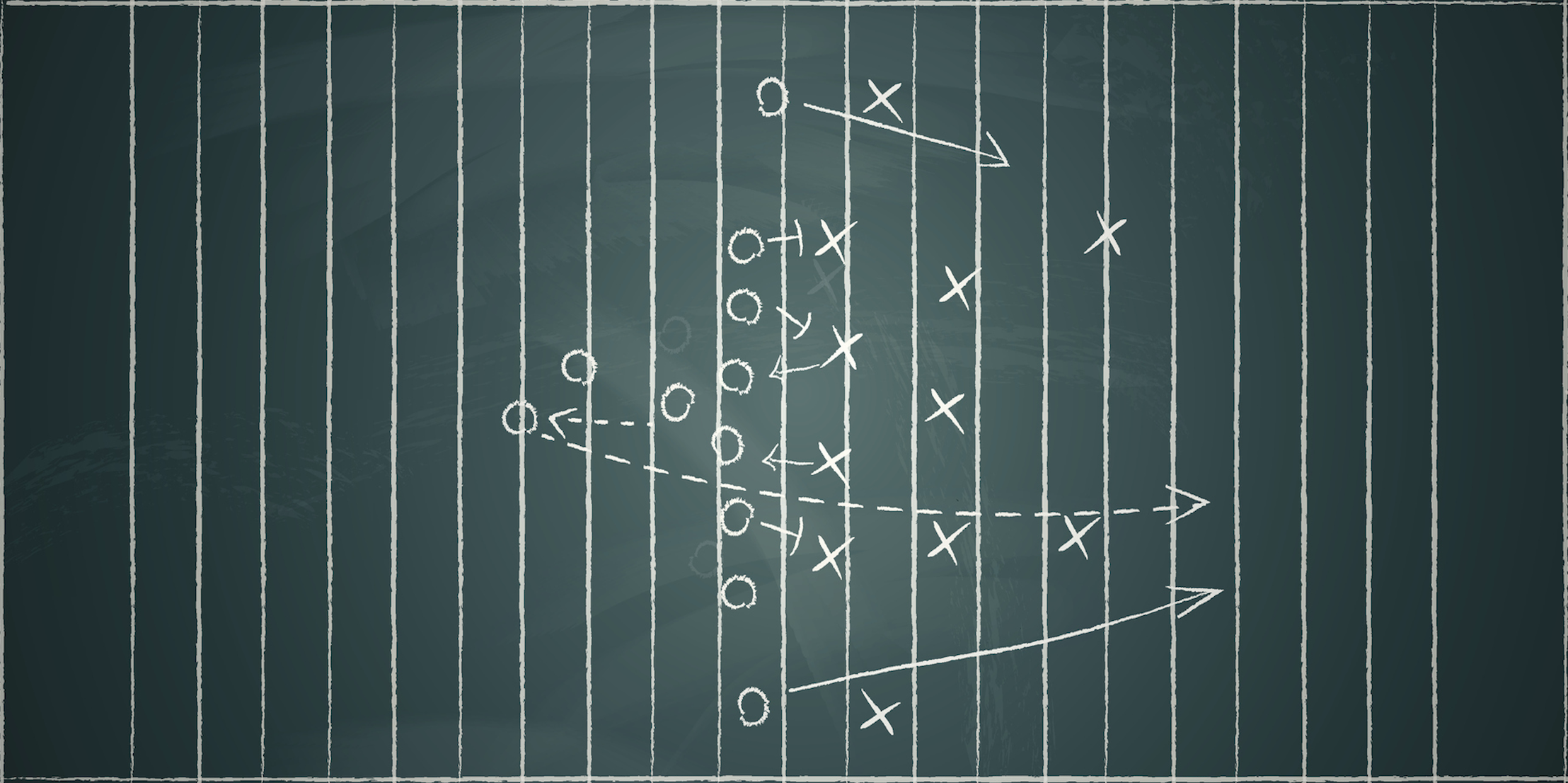In the current B2B sales process, which is defined by a multitude of customer touch points and numerous decision-makers throughout a complex buyer’s journey, it has never been more accurate to say that selling is a team sport.
Like all team sports, winning the game depends on having clear ground rules and strategies. Unfortunately, however, too many sales leaders aren’t being specific or consistent enough when defining those tactics and, as a result, their sales execution is suffering big time.
Think of it this way:
No NFL coach gathers his best players together and simply tells them to “pass the ball more” or “remember to work as a team.” He collaborates with his athletes to break down each play, so that everyone has clear guidelines for success. The same must be done for your sales team and sales process if you want to make it to that “Super Bowl” of predictable revenue.
Sales stages, tactics, and benchmarks must be defined properly before they can work correctly in your sales process. In other words, you need to create the ultimate sales playbook. It’s the only way teamwork can truly be achieved.
At Carbon Black, we know this from experience. A couple of years ago, our sales team kept running into very specific challenges that impeded our growth, beginning with ambiguous sales stage definitions and ending with unpredictable revenue forecasts. Because of these problems, there was no clear direction on which deals needed executive support and, worse, we couldn’t plan past each quarter because many of our deals were closing at the last minute.
If we wanted to stay on track with our plans of going public, we needed to take a step back and rebuild our sales process from the ground up. So, we went through the exercise of writing and implementing our strategies and benchmarks, which eventually helped us reach 95% sales forecast accuracy.
This process taught us how to truly think about sales as a team sport. If you’re in a similar situation, you might want to go through the same kind of bootcamp to create your own playbook.
Here’s how to begin:
Go Back to Sales Process Fundamentals
No matter what stage of business you’re at, going back to the basics will always be a valuable exercise. Plus, it’s absolutely critical to build your playbook on a solid foundation.
So, begin the first iteration of your playbook by reflecting on these questions:
- What is the biggest selling point of our product?
- Why would a customer purchase our product in this industry’s current climate?
- What is the most important trait in an effective sales leader at our organization?
- What steps should we take during each sale to ensure our customer feels confident about the purchase? What does each of those steps look like?
- What are some key ways we can continuously drive value after the initial sale is made?
You will be generating a lot of content around these 5 questions and this initial draft may be a bit of a mess. Don’t worry about that. Get all of that valuable information down and organize it as best you can. Then:
Formulate an Offensive Strategy
Once your rough draft has been written, your sales leaders and managers should discuss the most important sales actions for each stage of the selling process, with the goal of boiling them down to 6-10 simple steps per stage.
For example, Stage 1 might include:
- Reviewing the company pitch deck with the prospect
- Sharing customer success stories
- Giving a whiteboard presentation
- Delivering a product presentation
- Sending case studies and analysis reports
- Emailing product data sheets
As you go through this process, give each stage a name and outline the purpose of that stage. Then make sure you can answer these questions for each:
- What are the critical activities happening in the stage?
- Why is this sale stage important in the sales process?
- What specific problem is this stage addressing for the customer?
- What are the exit criteria?
Do this for each step. Keep the activities as straightforward as possible and make sure the steps are usable across all of your sales segments.
Tackle Your Exit Criteria
As you define your steps, pay very close attention to your “exit criteria.” That criteria should specify which actions a prospect needs to take in each stage of the sales cycle before graduating to the next level.
For example, your criteria for exiting Stage 1 might be:
- Getting a demo scheduled
- Identifying success criteria
- Identifying a “buying window”
Moving into Stage 2 would require all 3 of these activities to be performed. Make sense?
Be very detailed about these criteria. Doing so will create a blueprint for predictable revenue. When we did this at Carbon Black, we aligned as much as we could to industry-standard definitions on the stages of the sale. Then, we were brutal around the 3-4 point exit criteria that each prospect should demonstrate before moving out of a particular stage.
Do not skimp on this step. It will prove critical for your sales forecasting later.
Make Defining Your Sales Process a Team Effort
Bringing your team into the creative process is imperative for getting them to embrace the methods and activities outlined in your playbook. But it’s also an important step to make sure your plays are actually viable. So, once your strategy is in a good place, it’s time to review it with your best sellers across different segments.
As your team evaluates each step, make sure they can answer the following questions:
- What each stage might look like for each sales segment?
- Do these stages, and the associated exit criteria, work for the entire team?
- How does your current talk track align with each of these stages? What adjustments need to be made?
- What content or collateral should be implemented to manage and accelerate through each stage?
- What sales tools can you implement to encourage compliance?
Make sure your team members are 100% bought in on these stages before moving on to the next step.
Accurately Predict Your Wins
Once your playbook is in action, it’s time to continuously track its effectiveness. There is a very clear metric to help you determine whether or not your tactics are working: sales forecast accuracy.
If you have gone through these steps and determined the exit criteria for each sales stage, then you should have a very clear view about when your sales are expected to close. Also, if you have figured out the strategic plays that will most effectively move your prospects through the sales funnel, you will also notice an increase in sales efficiency, as well.
Treat this playbook like a living, breathing entity that can always be improved. Remember, the best teams don’t stop training because they win the Super Bowl; they constantly work together to beat their bests.
Using these methods, Carbon Black has maintained 66% year-over-year growth — and, I’m happy to report, we went public as planned. I hope these findings will help your sales team reach their next level of success, as well. Go team!


